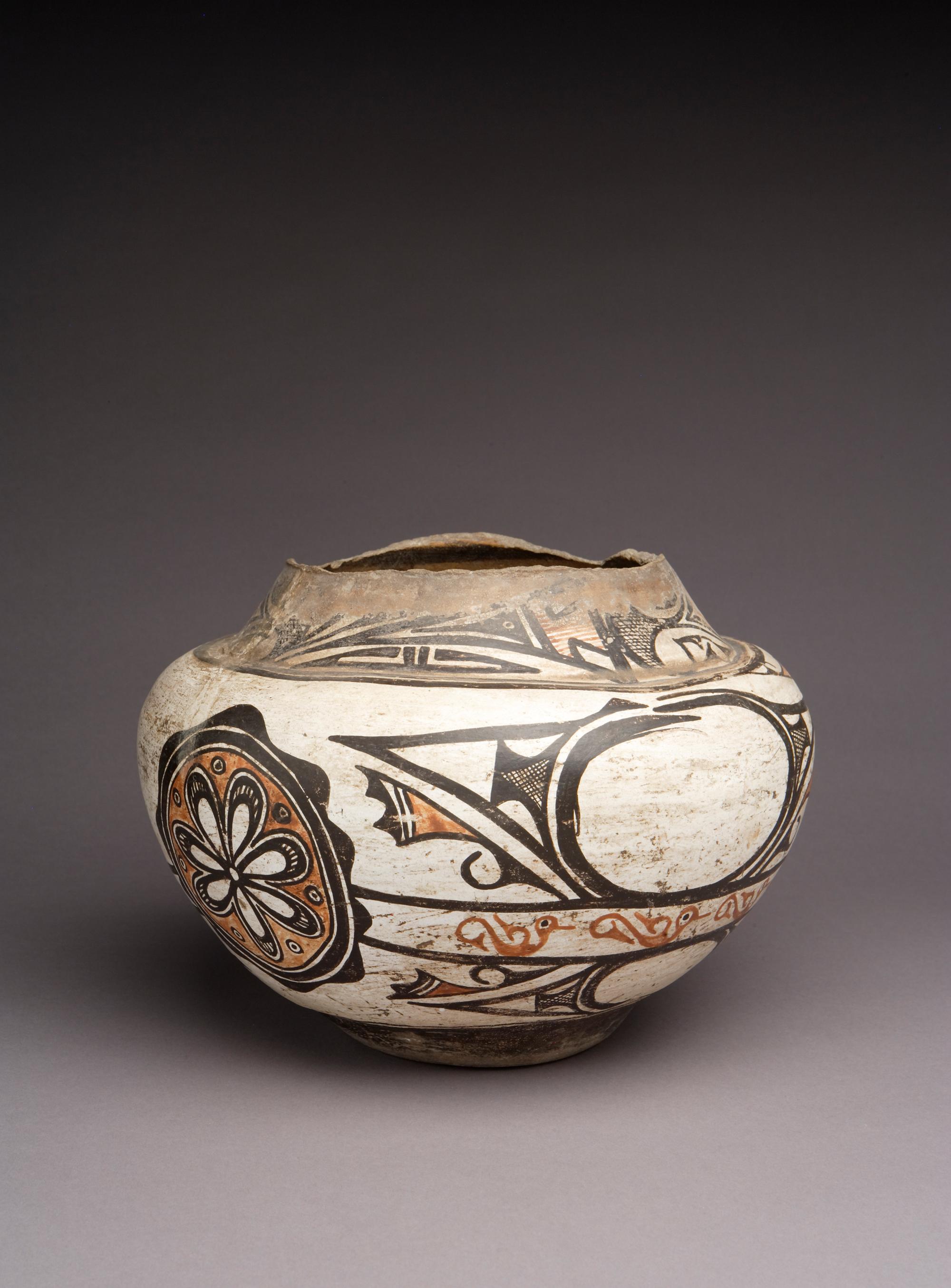
Photograph by Addison Doty. Copyright 2010 School for Advanced Research.
Water jar | K'yabokya de'ele
Date: 1885-1895
Artist or Maker: Unknown
Dimensions:
Dimensions: 26.7 × 33 cm (10 1/2 × 13 in.)
Weight: 3.2 kg (6.95 lb.)
Medium: clay | paints
Place Made:
Zuni Pueblo, McKinley County, New Mexico, Southwest, United States, North America
Object Number: IAF.1988
Not on view
Tribal Collection Review RemarksJim Enote and Octavius Seowtewa during collection review visit December 7 and 8, 2010 (Events Record “Collection Review: Zuni Tribe, Review 5”): The rim and neck of this jar are heavily eroded, to the point that the neck designs are difficult to see in places. The neck designs are a combined bird head/tail/wing design with flower designs. There is a double line with a line break separating the neck from the body designs. The body has two large seven-petaled flowers (often referred to as “rosettes”) placed opposite each other on the jar. The designs between the flowers are divided into upper, middle, and lower bands. The upper band has two bird heads with tails (the birds face each other in the middle). The lower band mirrors the upper band. The middle band is narrower than the other two and contains a line of small red birds. The middle band on one side of the jar has four red birds; the one on the opposite side contains five red birds. There is a thin line without a line break separating the body from the base. The base is black and shows heavy wear. The jar has a few repairs on it that appear to have been done with pine pitch.
The word for a water jar in Zuni is “k'yabokya,” which translates to “water container” in English. The intended use for these jars was to store and carry water, but they could also be used to store other items.
In Collection(s)
Bibliography:
Pueblo Designs
- Pg. 45
- Fig. Plate XIV, 3
The Indian Arts Research Center, in collaboration with Native American community scholars, strives to present accurate collections records. Records may be updated as new information becomes available and is reviewed with the Native American community having cultural affinity to particular items. Please write to iarc@sarsf.org if you have questions or concerns related to the documentation.
